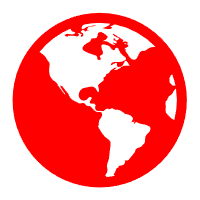China's photovoltaic (PV) industry shines in the wave of global energy transition. However, in recent years, the U.S. has continued to impose tariffs on Chinese PV products, and the scope has recently been expanded to four Southeast Asian countries, resulting in the overseas market environment for Chinese PV enterprises becoming increasingly complex. In early September, the United States announced that some of China's photovoltaic products to raise tariffs after the U.S. time on October 1, 2024, the U.S. Department of Commerce (Department of Commerce) announced from four countries in Southeast Asia (Cambodia, Malaysia, Thailand and Vietnam) crystalline photovoltaic cells (whether or not assembled into a module) countervailing duty (CVD) investigation of the preliminary ruling.
In accordance with the AD/CVD petition filed earlier this year by the American Alliance of Solar Manufacturing Trade Councils (AASMTC), the U.S. Department of Commerce will plan to announce a final countervailing (CVD) determination in February 2025, after making a preliminary initial determination in the antidumping case.
Once in the wave of global energy transition, China's photovoltaic industry also reconstructed the global photovoltaic supply chain. However, the U.S. imposed tariffs on Chinese photovoltaic products, and the scope of the expansion of four countries in Southeast Asia, which means that Chinese photovoltaic enterprises "through" Southeast Asia, four countries exported to the U.S. market plan blocked, to the Chinese photovoltaic enterprises to bring heavy challenges.
Impact of U.S. Tariff Increases
1. Sudden rise in export costs
High tariffs have made it difficult for Chinese PV products to enter the U.S. market. The 50% tariff on solar cells, silicon wafers and silicon materials are also included, making the upstream cost of the industrial chain increase dramatically. At the same time, the anti-dumping and anti-subsidy investigations in four countries in Southeast Asia, resulting in Southeast Asia is no longer the Chinese PV enterprises to export to the U.S. market “bridgehead”, indirectly raising the cost of exports.
2. Restricted market share
Under the pressure of high tariffs, the number and amount of Chinese domestic PV products exported to the U.S. has plummeted, and the U.S. market seems to be out of reach. According to industry consulting organization Infolink Consulting statistics, as of 2023, the main supply of U.S. photovoltaic modules still comes from Southeast Asia, accounting for about 60% of the total demand in the U.S. market, China's PV enterprises in the global market layout has been completely disrupted.
3. Industry competition and risk intensification
Europe and the United States trade protection measures to make Chinese PV enterprises exports tough, fierce domestic competition, some enterprises orders to reduce the price war overcast, so that the level of profits fell significantly.
So far, the footprints of Chinese PV manufacturers have spread to more than 100 countries and regions around the world. Although after one after another “blockade”, but China's photovoltaic enterprises can always find a new direction, to find the next sustainable development of the transit site is placed in the “sea” of China's photovoltaic enterprises in front of the more urgent issues.
Measures for Chinese Photovoltaic Enterprises
1. Technological innovation and industrial upgrading
Technological innovation and industrial upgrading are crucial. Domestic PV enterprises need to increase R&D investment, promote the commercialization of heterojunction, BC cells and other innovative products, improve product conversion efficiency and quality, support China's leading enterprises to quickly get out of the quagmire of involution, and continue to strengthen their technological advantages.
2. Supply chain reorganization
Supply chain reorganization is imperative. Adjust the layout as soon as possible, and establish overseas to look for new production bases. The Middle East, Indonesia and Laos will become the new choice. These countries and regions have not been included in the U.S. tariff list, some PV companies will choose to quickly transfer to the surrounding areas, to seize the window before the U.S. establishes a new bill.
3. Expanding overseas markets
Expansion of overseas markets should not be delayed. Realize diversified layout, develop emerging markets such as Asia and Africa, and reduce dependence on a single market. Strengthen the construction of overseas sales channels and service networks to enhance brand awareness and market share. But also need to consider the local economic environment, business regulatory environment, infrastructure and logistics, production costs and many other factors.
4. Policy response and risk control management
Policy response and risk control management are indispensable. The government introduces policies to support industrial development, and enterprises pay attention to overseas risk trends in time to avoid trade disputes. Establish risk early warning mechanism to cope with market fluctuations and policy changes.
5. Strengthen international cooperation
Strengthening international cooperation is equally important. Communicate and cooperate with international counterparts to jointly promote industrial development. Cooperate with local enterprises and integrate into the local market to realize win-win situation. Utilize international capital and resources, and adhere to the road of open development.

China's exports to the U.S. PV market is currently facing greater challenges, but Chinese enterprises are still actively responding to efforts to break through the predicament through a variety of ways, a comprehensive grasp of the laws and rules of the countries in which the investment is made, but also to do a good job of wind control planning, limit deduction and testing, and always be ready to defend their rights and interests; and pay close attention to the market changes and policy dynamics, in order to better adapt to the ever-changing environment.







